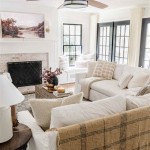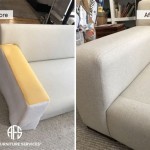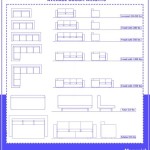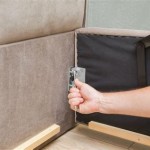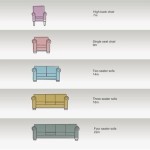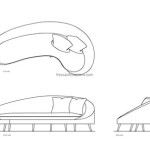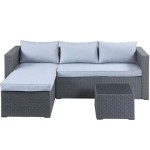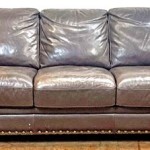Sofa Furniture Design: A Deep Dive into Table Top Integration
The integration of table tops into sofa furniture design represents a significant evolution in functional and aesthetic considerations for modern living spaces. This design trend, driven by the increasing demand for multi-functional furniture, aims to maximize convenience and space utilization, particularly in smaller homes and apartments. The integration comes in various forms, from built-in table tops that seamlessly blend with the sofa structure to detachable or adjustable surfaces that offer flexibility to the user. This article will explore the various aspects of sofa furniture design incorporating table tops, including its design principles, materials, types, and considerations for practical implementation within living environments.
The fundamental concept behind integrating table tops into sofa design revolves around the idea of creating a unified piece of furniture that serves multiple purposes. Traditionally, sofas and tables are considered separate entities, requiring individual space allocation and arrangement. However, contemporary lifestyles often require furniture solutions that can adapt to diverse needs and spatial constraints. By combining these two essential elements, designers aim to create a more cohesive and efficient furniture solution, reducing clutter and optimizing the available space. This approach reflects a broader trend in interior design towards modularity, adaptability, and the integration of technology.
This integration is not merely about attaching a surface to a sofa. It demands careful consideration of ergonomics, accessibility, and aesthetics. The table top must be at a comfortable height for various activities, such as working on a laptop, enjoying a meal, or placing beverages. The design should also ensure that the table top does not obstruct the seating area or compromise the overall comfort of the sofa. Moreover, the aesthetic integration is crucial. The table top should complement the style of the sofa and blend seamlessly with the overall design, creating a visually appealing and harmonious piece of furniture.
Key Design Principles for Integrated Table Tops
The successful integration of table tops into sofa furniture design hinges on several key design principles that must be taken into consideration throughout the development process. These principles address both functional and aesthetic aspects, ensuring that the final product is both practical and visually appealing.
Firstly,
ergonomics
play a critical role. The height and placement of the table top must be carefully considered to ensure comfortable use. A table top that is too high or too low can cause strain on the neck and back, making it uncomfortable to use for extended periods. The ideal height will depend on the intended use of the table top, whether it is primarily for working, eating, or simply placing items. Furthermore, the location of the table top in relation to the seating area is also important. It should be easily accessible to all occupants of the sofa without requiring them to stretch or strain. Measurements should be taken considering the average height and reach of users.Secondly,
accessibility
is paramount. The table top should be easily accessible to all users, regardless of their position on the sofa. This may involve incorporating multiple table tops or designing a table top that can be easily rotated or adjusted to accommodate different seating arrangements. The accessibility should also consider individuals with mobility limitations. Designs should allow for easy access and usage for a diverse range of users. The design should avoid obstructions that would hinder access to the table surface.Thirdly,
stability and support
are essential for ensuring the functionality and safety of the integrated table top. The table top must be securely attached to the sofa and capable of supporting a reasonable amount of weight without wobbling or tipping. The support structure should be sturdy and durable, capable of withstanding regular use and potential impacts. Reinforcements and bracing may be necessary to ensure the stability of the table top, especially if it is made of heavier materials such as solid wood or stone. The support structure should also be discreetly integrated into the overall design of the sofa to avoid detracting from its aesthetic appeal.Fourthly,
aesthetic integration
is crucial for creating a cohesive and visually appealing piece of furniture. The table top should complement the style and design of the sofa, blending seamlessly with the overall aesthetic. The choice of materials, finishes, and shapes should be carefully considered to ensure that the table top enhances the overall look of the sofa. The design should avoid creating a jarring or disjointed appearance by ensuring that the table top and sofa are visually compatible. This may involve using similar materials or finishes, or incorporating design elements that tie the two elements together.Materials Employed in Table Top Design
The selection of materials for the table top is a crucial decision that impacts both the aesthetic appeal and functional performance of the integrated design. A wide range of materials can be utilized, each offering unique characteristics in terms of durability, weight, texture, and visual appearance. The choice of material should be based on the intended use of the table top, the overall style of the sofa, and the desired level of maintenance.
Wood
is a popular choice for table tops due to its natural warmth, durability, and versatility. Solid wood offers a classic and timeless look, while engineered wood products such as plywood and MDF provide a more cost-effective alternative. Different types of wood can be used, each with its own unique grain pattern and color. Hardwoods such as oak and maple are known for their strength and durability, while softwoods such as pine and cedar offer a more rustic and informal look. The wood can be finished with a variety of stains, paints, and varnishes to achieve the desired aesthetic. Proper sealing is essential to protect the wood from moisture and stains. Wood offers a range of sustainable options depending on sourcing and certification.Glass
table tops offer a sleek and modern look, adding a touch of elegance to the sofa design. Tempered glass is the preferred choice due to its increased strength and safety. It is also resistant to scratches and stains, making it a practical choice for everyday use. Glass table tops can be clear, frosted, or tinted, offering a range of aesthetic options. The transparency of glass can help to create a sense of openness and lightness in the living space. However, glass can be more prone to fingerprints and smudges and requires regular cleaning. The design of supporting structures for glass table tops requires careful consideration to ensure stability and prevent breakage.Metal
table tops offer a durable and industrial aesthetic, often used in contemporary and minimalist designs. Stainless steel, aluminum, and powder-coated steel are common choices for metal table tops. These materials are resistant to corrosion and can withstand heavy use. Metal table tops can be easily cleaned and maintained. The use of metal can add a modern and industrial edge to the sofa design. Finishes such as brushed or polished metal can enhance the aesthetic appeal. Sharp edges should be avoided or properly finished to prevent injury. Metal can be combined with other materials such as wood or glass to create a more dynamic and visually interesting design.Stone
such as marble, granite, or slate can be used to create luxurious and durable table tops. Stone table tops offer a natural and elegant look, adding a touch of sophistication to the sofa design. Stone is highly resistant to heat and scratches, making it a practical choice for everyday use. However, stone is also heavy and can be more expensive than other materials. Proper sealing is essential to protect the stone from stains. The weight of the stone requires a robust supporting structure. The natural variations in color and pattern make each stone table top unique.Composite materials
such as solid surface materials (e.g., Corian) offer a versatile and durable option for table tops. These materials are non-porous, resistant to stains and scratches, and can be easily molded into various shapes and sizes. Composite materials are available in a wide range of colors and patterns, offering a variety of aesthetic options. These materials can be seamlessly integrated with other materials such as wood or metal. Composite materials are often more environmentally friendly than some other options, offering a sustainable alternative.Types of Table Top Integration in Sofa Design
Table top integration in sofa design can be classified into several distinct types, each offering unique functionalities and aesthetic properties. These types differ in terms of their placement, adjustability, and overall integration with the sofa structure.
Built-in table tops
are seamlessly integrated into the sofa structure, forming a permanent part of the furniture. These table tops are typically fixed in place and cannot be adjusted or removed. They offer a clean and streamlined look, blending seamlessly with the overall design of the sofa. Built-in table tops are often incorporated into the armrests or sides of the sofa, providing a convenient surface for placing drinks, snacks, or remote controls. The dimensions and placement of built-in table tops must be carefully considered to ensure that they do not obstruct the seating area or compromise the comfort of the sofa. These types maximize space saving, but they lack flexibility.Pull-out table tops
are designed to be hidden within the sofa structure when not in use and can be pulled out or extended when needed. These table tops offer a flexible and space-saving solution, allowing users to have a table surface readily available without taking up extra space in the room. Pull-out table tops are often incorporated into the base or sides of the sofa, sliding out smoothly and easily. The mechanism for pulling out the table top should be durable and reliable, ensuring smooth operation and long-term use. Careful attention should be paid to the storage location of the table top when it is retracted to ensure that it does not interfere with the seating area or other functions of the sofa. These designs prioritize space saving but may compromise on structural integrity depending on the extension mechanism.Adjustable table tops
offer the ultimate flexibility, allowing users to adjust the height, angle, or position of the table top to suit their needs. These table tops can be raised or lowered to accommodate different activities, such as working on a laptop, eating a meal, or playing a game. Adjustable table tops are often attached to the sofa using a mechanism that allows for easy adjustment. The mechanism should be sturdy and reliable, ensuring that the table top remains stable and secure at any height or angle. Adjustable table tops are particularly useful for users with mobility limitations or those who require a customized workspace. These types offer enhanced customizability for different use cases.Detachable table tops
offer versatility by allowing the table top to be completely removed from the sofa when not needed. This design is useful for situations where the table top is only needed occasionally or when the user wants to create more space in the room. Detachable table tops can be easily attached and detached from the sofa using a simple mechanism, such as magnets or clips. The design should ensure that the table top can be securely attached to the sofa to prevent it from tipping or falling. Storage space should be provided for the table top when it is detached from the sofa. These designs allow for maximum space utilization and adaptability.Swivel table tops
are attached to the sofa by a rotating mechanism, allowing the table top to be easily rotated to different positions. This design is useful for situations where the table top needs to be accessible to multiple users or when the user wants to change the orientation of the table top to suit their needs. Swivel table tops can be rotated 360 degrees, providing maximum flexibility. The mechanism should be smooth and reliable, allowing for easy rotation without wobbling or sticking. Swivel table tops are often used in combination with other features, such as adjustable height or detachable functionality. These tables provide convenient access and directional adjustment.
Dropship Contemporary Rectangle Design Living Room Furniture Modern High Gloss Surface Cocktail Table Center For Sofa Or Upholstered Chairs 45 2 25 5 13 7in To At A Lower Doba

Unique Design Coffee Table With 4 Storage Compartments Brown Aosom Com

Tribesigns Way To Origin Benjamin 55 In Gold White Rectangular Marble Long Console Table Modern Behind Sofa Couch Narrow Entryway Home Office

White Agate Coffee Dining Table Top Stone Sofa Center Side Room Furniture Home Decor

Sofa Table Drinks Holder Handmade To Size Custom Height Coffee End Side Industrial Steel With Wooden Top

Furniture Of America Walworth Dark Oak Glass Top Sofa Table

Modern Coffee Table журнальный столик Creative Furniture Tempered Glass Living Room Small Apartment Rectangular Aliexpress 1503

Rich Espresso Finish 1pc Sofa Table With Glass Inserted Top Curve Legs Lower Display Shelf Stylish Living Room Furniture Urban Los Angeles Ca

Luxury Furniture Design Italian Travertine Coffee Center Table Set For Lobby Sofa Top End Made In China Com

Natural Agate Stone Coffee Side Sofa Center Dining Table Top Handmade Art Interior Furniture Decor Oragnic
Related Posts

